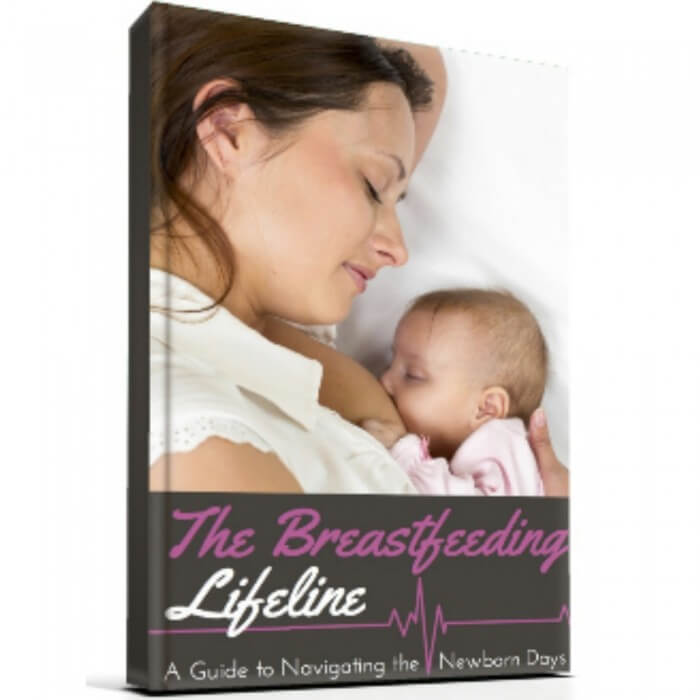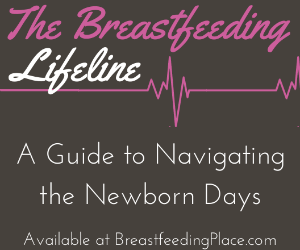Breastfeeding can be taxing for mom. There are any number of reasons that a woman may want or need to wean her baby, including going back to work, illness, pregnancy, and just feeling tired of breastfeeding. If you’re asking, “How do I wean my baby?,” settle in for a good read – and be sure to leave your questions in the comments below!

The American Academy of Pediatrics recommends breastfeeding for one year or longer. The World Health Organization recommends nursing for two years and beyond. If you’ve examined these recommendations and still feel ready to wean, continue reading.
It doesn’t have to be “all or nothing.”
Depending on your situation, you may decide to supplement with formula or solid foods in order to cut back on the number of nursing sessions. This may not mean that you need to wean your baby entirely! While breastmilk production is dependent on demand, you may be able to lactate enough to provide an immune boost and comfort to your little one without breastmilk being his primary source of nutrition.
Be aware that you could be taking the risk of halting your milk production if you start down this road, but if you are planning to wean it is good to know that there is an in between option for some women and children. Please note that it is important that breastfeeding is well established before introducing any other soothers or foods in order to avoid nipple confusion.

Nursing aversion and “nursing strikes”
Nursing aversion in mothers (feeling so uncomfortable or unhappy while nursing that you want to stop) often occurs while pregnant with a sibling as nipples become more sensitive. It may also occur when mom is going through a trying emotional time and just feeling “touched out.”
A “nursing strike” (refusing the breast) in a baby or toddler is often part of a developmental growth spurt when there are just too many other interesting things to do. A nursing strike may coincide with the introduction of solids around six months.It may also occur when baby is feeling ill and milk upsets his stomach or nursing causes discomfort in his mouth or throat.
Try to troubleshoot these things and give them time to pass before deciding to wean.
Practical Steps for Weaning at Each Stage
Infant – DO NOT WEAN ABRUPTLY if possible! It will take a while for your body to get the message that your baby does not need milk. Weaning suddenly may cause engorgement and lead to dangerous mastitis (breast infection). Talk with your care provider about medications and supplements that may help you “dry up” if you are forced to do so.
Otherwise decrease gradually, offering baby a bottle of stored milk or formula to replace one or two feedings and decreasing time at the breast each day. You may also want to find a good breast pump. Above all, be diligent to provide for your baby’s needs for nutrition and comfort.
Older Baby – If your baby is under a year old, you will still need to find breastmilk or formula to offer him. In addition, be sure to choose healthy solids and do not introduce solid food too early. When he is able to digest solids well, try offering him a meal before the breast to help decrease the length of nursing sessions. Offer lots of snuggles, but keep your breasts inaccessible – no low cut shirts for a while. Also be aware that weaning abruptly at this stage could still cause engorgement and mastitis.
Toddler – This is the stage that many children wean themselves. They may forget to ask to nurse for days at a time, and if you don’t offer they may stop asking altogether. You can help them along by night weaning, offering an alternative comfort measure (snuggling, singing, rubbing their back), offering food or water before breasts, and having daddy take care of the nighttime routine if nursing is a regular part of it. It is important to realize that toddlers understand the emotions behind your actions. Try to avoid making them feel like breastfeeding is a nuisance. They will put that on themselves and may be even clingier for fear of losing you. Explain the transition to them if you can.
Emotional Considerations for Mom
You might get sad or change your mind. Weaning may rock you emotionally more than you anticipate. Some of that is just normal grief over change and the end of an era. And some of it may be physiological withdrawl from the hormones that have been produced by breastfeeding. In any case, go easy on yourself! And prepare your partner and friends for the possibility that you may need some emotional support.
It is also absolutely possible that at some point after initiating or completing the weaning process you will decide you’d rather not be done after all. Think through this possibility ahead of time and be open to re-establishing your nursing relationship if possible either by increasing breastfeeding sessions or relactating.






[…] suppression is typically a gradual process as a baby is slowly weaned from the breast. This article is written to help grieving mothers who choose to stop lactation […]